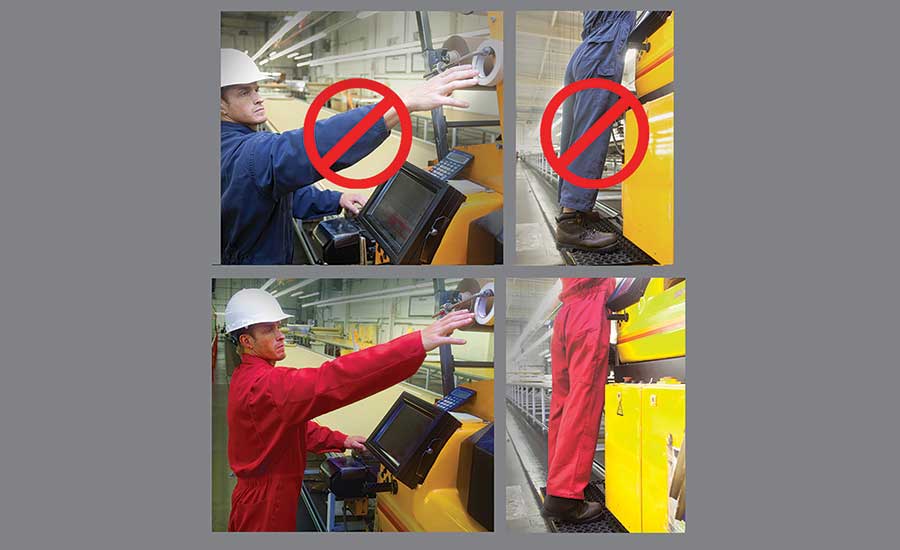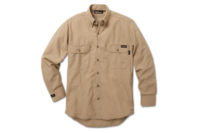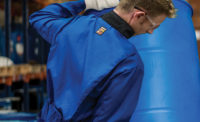Hazard education: What every employee should know about their FR workwear

You studied all of the latest innovations in FR clothing. You carefully vetted manufacturers and products to find the workwear that would offer the best combination of protection, comfort and durability. You made sure that every employee was supplied with the proper protective garments. And then you looked around a week later and saw that only a few of those employees were wearing their FR clothing correctly, if at all.
Selecting the right FR clothing is a vital part of protecting employees against heat- and fire-related hazards, but if employees don’t wear their FR garments properly, the safety benefits are significantly reduced. One of the best ways to encourage effective, compliant use of FR workwear is to provide thorough, comprehensive training.
In fact, the value of training is so significant that OSHA mandates that employers not only identify hazards that necessitate the use of FR clothing, but also ensure employees are educated on the proper use and care of that clothing. This requirement is echoed by other key FR clothing standards, such as NFPA 70E. Additional standards, like NFPA 2113, provide further guidelines regarding the proper wear, care and maintenance practices that end users should know.
Proper training is necessary
An important part of safety training is ensuring that each employee is aware of the hazards they may face in their workplace — such as arc flash, flash fire or low-visibility conditions — and understands the PPE necessary for protection against those hazards. For employees in need of high-visibility garments, this means informing them of the class and type of apparel necessary for their working conditions, as identified by the ANSI/ISEA 107-2015 standard. Similarly, employees in need of protection against arc flash should be informed of the level of incident energy they may encounter as well as the corresponding arc rating required for their arc-rated FR clothing. Guidelines on the particular PPE needed for various electrical environments are outlined in the NFPA 70E standard. Employees that may be exposed to flash fire should know to wear garments that have been UL certified to the NFPA 2112 standard.
In addition to receiving training on the specific types of FR workwear they need, employees should also be instructed on the proper use of these garments. Remind employees to keep their shirts tucked in and their shirts, coveralls and pants buttoned or zipped completely. Caution employees against rolling up their sleeves, wearing non-FR clothing over their FR garments and wearing under layers that could melt to the skin if exposed to heat or flame.
A final topic related to FR clothing that safety training should cover is care and maintenance. If employees are responsible for laundering their own FR clothing or FR clothing that will be used by other workers, ensure they are aware of the best practices for maximizing the quality, protection and longevity of the garments. This includes washing all new workwear prior to first use, washing FR clothing separately from other apparel, avoiding chlorine bleach, and thoroughly removing any oils or flammable contaminants from clothing. Employees should also consult the manufacturer’s care label on each garment and follow any additional instructions provided.
Even if employees do not launder their own workwear, there are other maintenance precautions they should know and follow. FR clothing that has holes or tears, worn spots, fuzzy or frayed fabric, chemical stains, or charring, can compromise safety. Employees should not attempt to repair damaged FR clothing themselves. Instead, these garments should be returned to the manufacturer or an authorized repair facility to be properly repaired using only FR fabrics, threads and components. FR workwear that is damaged beyond repair should be immediately replaced.
Make FR workwear appealing
Providing training on FR clothing can go a long way toward improving safety. However, selecting the right FR clothing also plays a role. Even with the proper training, employees may choose not to wear workwear that is uncomfortable or unattractive. To help ensure FR workwear is as appealing to employees as possible, look for lightweight fabrics, modern styles that support job performance, comfortable options like FR denim, and clothing designed to provide the best fit possible — such as women’s FR workwear designed specifically for women.
With a combination of the right FR clothing and training — training that thoroughly covers the specific types of FR protection needed, the proper way to wear each garment, and the protocol for ongoing care and maintenance — you can help ensure that employees wear their protective workwear consistently, correctly and compliantly.
Looking for a reprint of this article?
From high-res PDFs to custom plaques, order your copy today!





